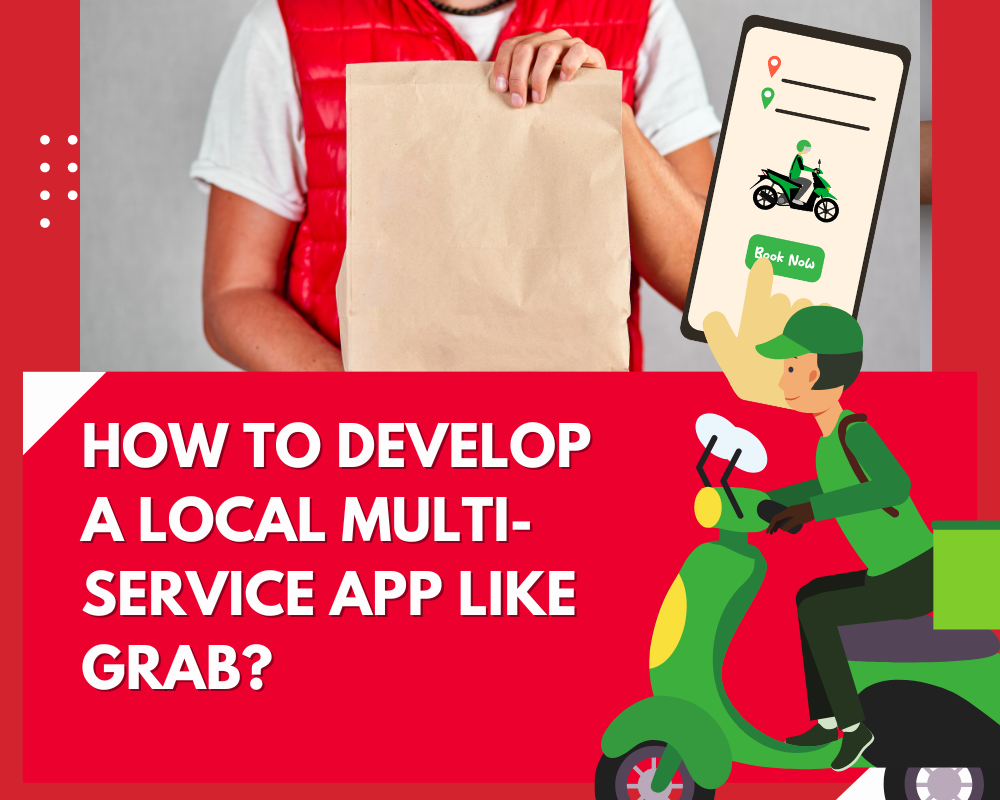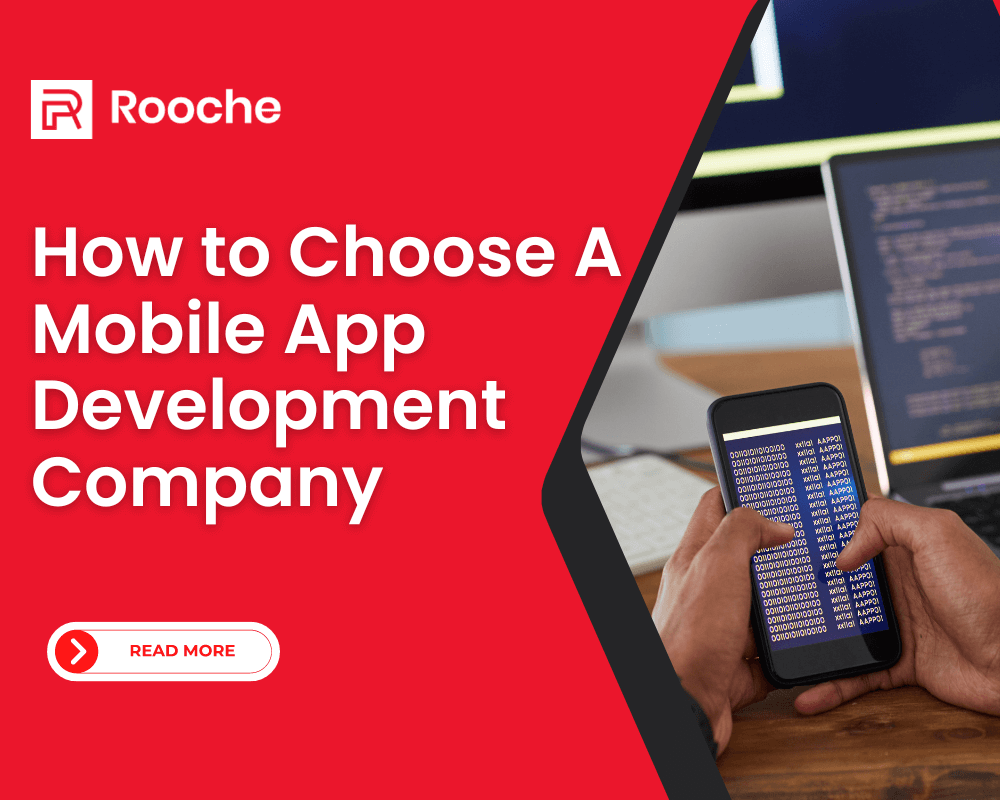How to Choose A Mobile App Development Company
You have a low-cost mobile app development project you want to get off the ground but don’t know where to […]
Dec 8, 2022
May 24, 2023

In today’s fast-paced and digital-driven world, the convenience of on-demand services has become a necessity for many people. From transportation to food delivery and everything in between, multi-service apps like Grab have revolutionized the way we access and avail various services in our local communities. If you’re intrigued by the success of such apps and want to develop your own local multi-service app, you’ve come to the right place.
In this blog post, we’ll dive into the process of developing a local multi-service app similar to Grab. We’ll explore the key features, technologies, and considerations you need to keep in mind to create a successful and user-friendly platform. Whether you’re an aspiring entrepreneur looking to tap into the growing on-demand market or a business owner wanting to expand your services, this guide will provide you with valuable insights and practical steps to get started.
Before beginning the process of developing a local multi-service app like Grab, one must conduct a thorough market analysis. The goal of this analysis is to assess the current market and identify potential opportunities for growth. It’s important to consider factors such as target audience, competition, geographical area, and pricing structure.
The first step in conducting a market analysis is to identify the target audience. This will help determine the types of services that should be offered on the app and ensure that it meets the needs of users. It can also inform marketing strategies by helping to identify who should be targeted with specific promotions or discounts.

The next step is to examine the competition in terms of services offered, pricing structures, and customer satisfaction ratings. By researching competitors’ apps, developers can gain insights into what works and what doesn’t when it comes to creating a successful local multi-service app like Grab.
Finally, geographical area should be taken into consideration when conducting a market analysis for a local multi-service app. Developing an app that caters to a large metropolitan area will require different considerations than creating one specifically for a rural community. Analyzing potential areas for expansion can help inform decisions about which services should be offered on the app and where they should be available.
By conducting an in-depth market analysis prior to development, developers can ensure that their local multi-service app meets the needs of its users while also providing competitive advantages over rival apps. With this information in hand, they’ll have an edge when creating their own version of Grab.
The app should contain features that will make it both user-friendly and efficient. It should include a payment system to process transactions, a customer service system for inquiries, and an automated booking system. The app should also feature an integrated mapping system with real-time updates on traffic, weather, and other relevant information. Furthermore, the app should have location services that allow users to find nearby services quickly and easily. Lastly, the app must be able to integrate with other apps like social media platforms to facilitate communication between customers and drivers.

In terms of security, the mobile application should have multiple layers of authentication protocols in place. This includes verification codes or biometric authentication methods such as fingerprint scanning or facial recognition. Additionally, secure payment gateway systems such as Apple Pay or Google Pay should be used for all transactions within the app.
The user interface (UI) is a key element in any multi-service platform. The UI must be intuitive so that users can easily navigate around the various sections of the app without difficulty. Furthermore, it must also be designed to display large amounts of data clearly and concisely without cluttering up the page.
Finally, it is important for developers to focus on scalability when developing a multi-service platform such as this one. This means building an infrastructure that can handle large volumes of data quickly and efficiently while still providing reliable performance even under heavy load conditions.
Armed with the features of the app in mind, it’s time to move on to designing the user interface. The key to a successful user interface is creating an intuitive design that encourages users to take action. It should be easy to use and navigate. An effective user interface should also be visually appealing, as this will help keep users engaged and interested in using the app.
The first step in designing the user interface is to create a wireframe or prototype of the app. This allows you to map out the basic layout and flow of the app, making it easier for developers to see how all of the components will fit together. Wireframing is also beneficial for visualizing how certain features and functions work within an app before it’s built, allowing developers to make necessary changes if needed.

Once you have a basic prototype ready, it’s time to start designing its visual elements such as colors, fonts, icons, images, buttons and more. Pay attention to details such as text size and color contrast so that users can easily read text on their screens without straining their eyes. Additionally, consider adding animations or interactions that give users feedback when they interact with your app. This will make it easier for them to understand what actions they need to take while using your app.
In order for your local multi-service app like Grab to be successful, it needs an attractive yet functional design that provides a pleasing user experience from start to finish. With careful planning and thoughtful design decisions, you can create an effective user interface that encourages people to use your app frequently and ultimately brings success for your business venture.
Choosing the right technology stack is essential for developing a successful multi-service app like Grab. There are several key considerations to take into account when making this decision. First, it’s important to determine what type of services the app will offer. This will impact the selection of technologies that can support those services, including databases, web frameworks, and programming languages.
The second factor to consider is scalability. If the app is expected to grow in popularity, then it needs to be able to accommodate more users and transactions without crashing or slowing down. Therefore, selecting a technology stack that offers reliable performance at scale is critical.
Thirdly, cost should also be taken into consideration when choosing a technology stack. Different technologies often require different licensing and hosting fees which can add up quickly if the wrong choice is made. It’s important to research all available options to determine which ones offer the best value for money.
Finally, your team of developers should also consider how easy it would be to develop and maintain an app with each technology stack before making their final decision. Some stacks may be more difficult for beginners while others may be too complex for experienced developers. Taking all these factors into account will help ensure that the best possible technology stack is chosen for the job.
Now that the technology stack for a local multi-service app like Grab has been selected, the next step is to integrate a payment gateway. This will allow users to make payments within the app for services rendered. Payment gateways provide an easy and secure way to process online payments.
When choosing a payment gateway, it’s important to keep in mind the specific needs of your app. Some factors to consider include transaction fees, supported currencies, scalability, security, customer service, and more. Additionally, make sure that the payment gateway you choose is compliant with relevant regulations in your jurisdiction.

Integrating a payment gateway into your app may involve writing custom code or using third-party libraries and APIs. This can be time-consuming but is necessary for creating an efficient user experience and protecting user data. Make sure that you understand the technical details of integrating a payment gateway before starting development.
Once you’ve chosen a payment gateway and integrated it into your app properly, you’re ready to move on to other aspects of development such as testing and deployment. Testing can help identify any issues with integration before users start making payments through your app. Deployment requires setting up hosting infrastructure and configuring settings related to the payment gateway.
Once the multi-service app has been developed and is ready to be tested, it needs to be deployed in order to be viewed by users. The first step of testing and deployment is to create an environment in which the app can be tested. This can be done through a staging server that will simulate the actual environment in which the app will run.
The next step is to deploy the app on a public server so that it can be accessed by users. This requires setting up a hosting service and configuring it for optimal performance before deploying. Additionally, security measures should also be implemented during this process to ensure the safety of user data. After deploying, automated tests should be conducted frequently in order to check for any bugs or issues that may arise from regular usage.
Once all of these processes have been completed and any necessary bug fixes or updates are made, it’s time for the launch! Advertising campaigns should begin leading up to launch date, as well as promotional emails sent out informing users about new features or deals available when using the app. User feedback should also be collected post-launch in order to identify any areas of improvement or additional features desired by users. With all these steps complete, the multi-service app is now live and ready for use!
Developing a local multi-service app like Grab may seem to be a challenge for some business owner who want to step-up and scale, but with the right approach and guidance, it is absolutely achievable.
Remember, building a multi-service app requires careful planning, continuous improvements, and a user-centric mindset. By focusing on delivering a seamless user experience, ensuring safety and security, and providing exceptional customer support, you can set your app apart from the competition and establish a loyal user base.
Rooche Digital specialize in developing customized and scalable mobile app solutions. If you’re ready to take the next step in building your local multi-service app, our team of experienced professionals is here to help. Contact us today to discuss your project, explore your ideas, and transform them into a feature-rich and high-performing app that meets the unique needs of your target audience.
Don’t miss out on the opportunity to tap into the growing on-demand market and revolutionize the way services are accessed in your local community. Get in touch with Rooche Digital today and let’s embark on this exciting journey together.

You have a low-cost mobile app development project you want to get off the ground but don’t know where to […]
Dec 8, 2022

A lot has changed since the first websites were built. In the early days, these sites were simple, but they […]
Dec 8, 2022

As a business owner, you know how important it is to have an online presence. But what kind of web […]
Jan 2, 2023
Join our newsletter and be the first to receive future promo and sale updates from Rooche!